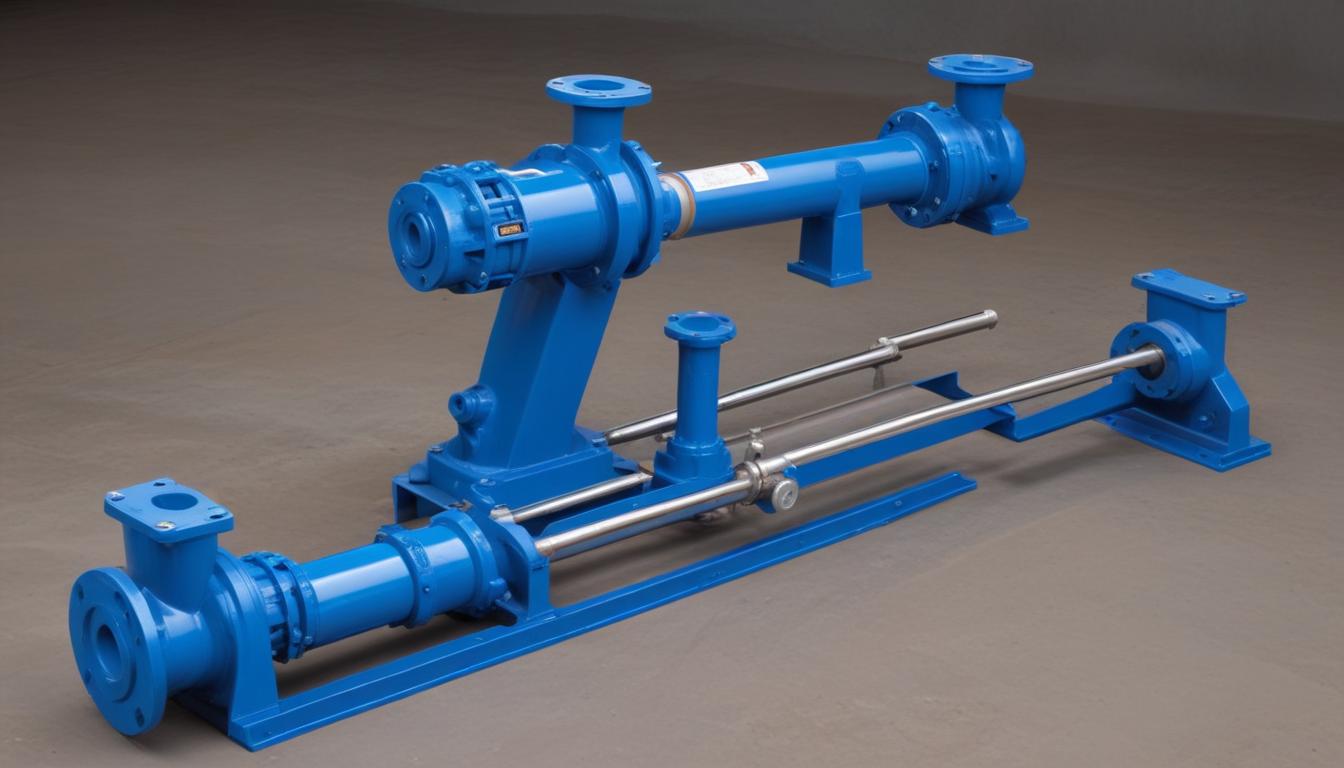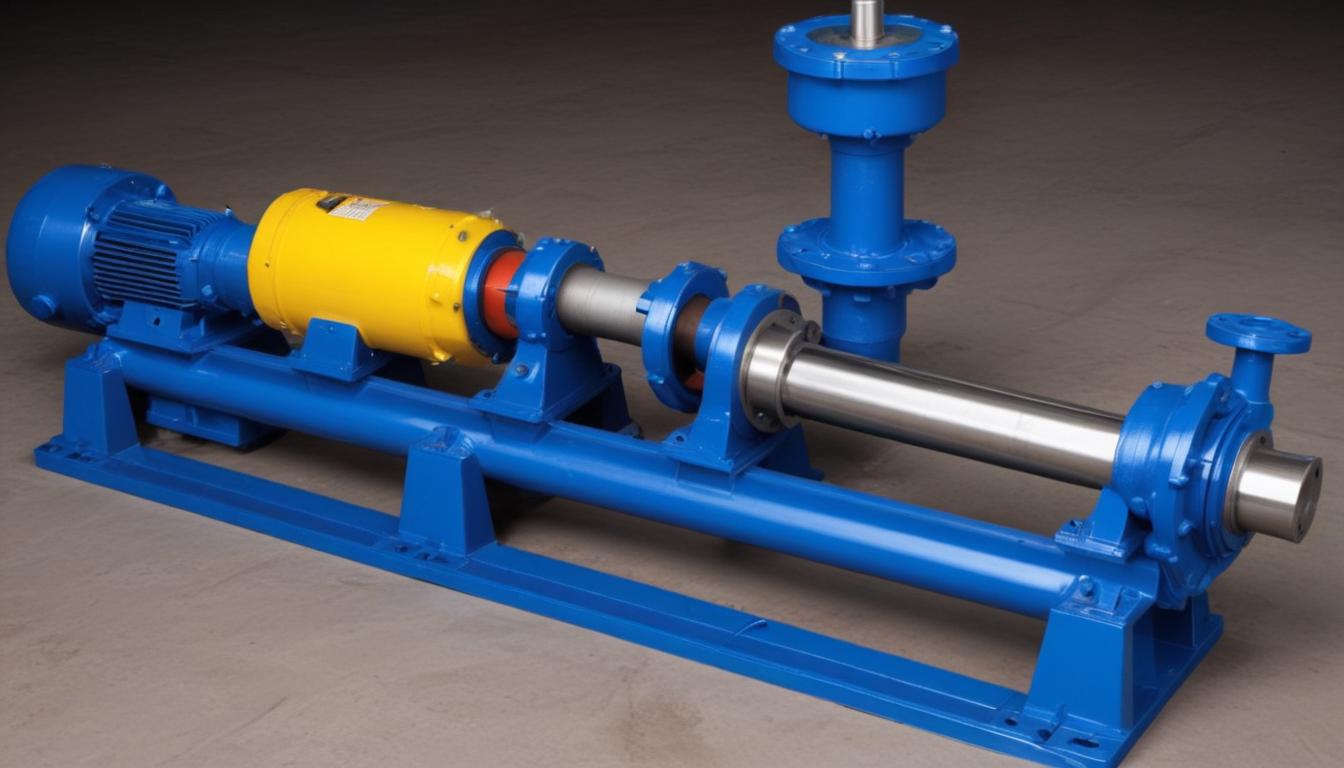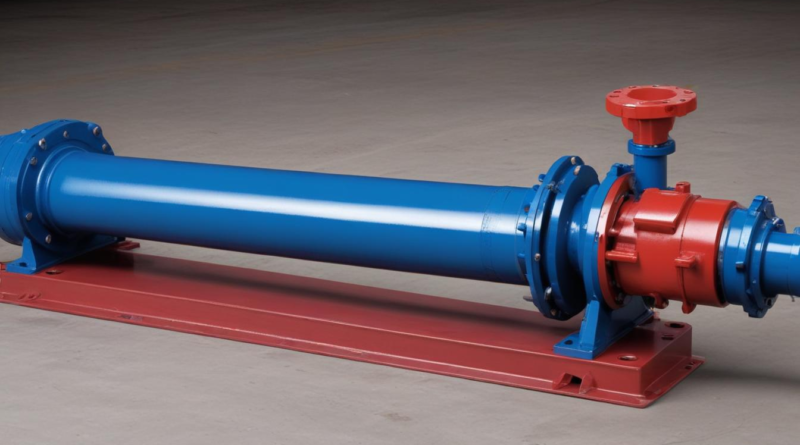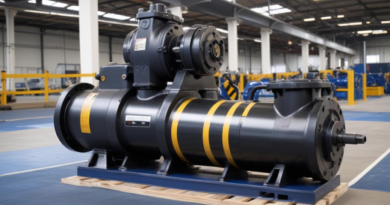Essential components of progressive cavity pumps
Progressive cavity pumps are engineered to deliver consistent flow rates and are comprised of several essential components that contribute to their efficiency and reliability. Understanding these components is crucial for engineers and pump users to maximize performance and maintenance capabilities.
The primary components of progressive cavity pumps include the following:
- Rotor: The rotor is a helical screw-shaped part that rotates within the stator. Its design facilitates the movement of fluid through the pump, effectively creating a chambered volume that transports material with minimal turbulence.
- Stator: The stator encases the rotor and has a matching helical profile. It is typically made from elastomeric materials, providing an elastic interface that enhances the sealing and flow capacity while reducing wear.
- Drive Mechanism: This component usually consists of an electric motor and a gearbox or direct coupling that transmits rotational force to the rotor. Efficient drive mechanisms are essential for maintaining optimal pump operation under varying load conditions.
- Sealing Solutions: Effective sealing systems are crucial to prevent leakage and contamination. Common sealing solutions include dynamic O-rings and mechanical seals that ensure fluid integrity and protect the internal components from external elements.
- Hopper: In applications handling viscous fluids or solids, a hopper is integrated to facilitate the loading of materials into the pump inlet, allowing for smoother operation and less wear on the rotor and stator.
- Discharge Port: The discharge port is where the pumped fluid exits the system. Its design is critical in maintaining pressure and ensuring a consistent flow rate while reducing back pressure that could impede operations.
By recognizing these components and their functionalities, engineers can appreciate the intricacies involved in the operation of progressive cavity pumps, leading to improved application designs and reliable performance across various industries.
Overview of Progressive Cavity Pumps
Progressive cavity pumps are a unique type of positive displacement pump that operates through a rotating mechanism to move various types of fluids, including those with high viscosity or containing solids. Their design includes an intricately shaped rotor rotating within a stator, creating a series of sealed cavities that transport fluid with minimal pulsation. This mechanism allows for the maintenance of a constant flow rate, making progressive cavity pumps suitable for demanding applications such as chemical processing, wastewater treatment, and food production.
The versatility of progressive cavity pumps lies in their ability to handle a wide range of materials, from thin liquids to highly viscous slurries. The gentle pumping action ensures that the fluid is not subjected to shear forces that can degrade sensitive materials. Moreover, the design allows for self-priming capabilities, which is essential when dealing with non-lubricating fluids and elevated suction lifts.
One of the defining features of progressive cavity pumps is their ability to operate effectively under varying pressures and flow conditions. This adaptability is crucial for processes that experience fluctuating demands and ensures consistent performance throughout the operational lifecycle. Furthermore, the modular nature of the components allows for straightforward maintenance and repairs, significantly reducing downtime and operational costs.
The effectiveness of progressive cavity pumps is derived from their distinct design and functional characteristics. By understanding the operation and applications of these pumps, engineers can better align their pumping solutions to meet the specific needs of their processes.
Rotor and Stator Design

The design of the rotor and stator in progressive cavity pumps is pivotal to the pump’s overall efficiency and performance. These components work in a synchronized manner to create a series of sealed cavities that transport the fluid with minimal turbulence and shear. The interaction between the rotor and stator defines the pump’s capabilities, including flow rate, pressure stability, and the type of fluids it can effectively handle.
The rotor is typically constructed from high-strength materials such as stainless steel or specialized alloys to withstand wear and corrosion. Its helical design, characterized by a continuous spiral, ensures that as the rotor turns, it progressively moves the fluid. The shape and material selection critically impact the pump’s ability to handle abrasive or viscous materials.
The accompanying stator, often made from elastomeric compounds, molds to the rotor’s shape, providing a tight seal that minimizes leakage and maximizes efficiency. The choice of elastomer is vital, particularly in applications involving corrosive or high-temperature fluids. An appropriately selected stator material not only improves sealing capabilities but also extends the service life of the pump.
| Material Types | Properties | Applications |
|---|---|---|
| Stainless Steel | High strength, corrosion-resistant | Abrasive media, chemical processing |
| Elastomers | Flexible, wear-resistant | Food processing, wastewater treatment |
| High-Performance Alloys | Extreme durability, temperature resistance | Oil & gas, pharmaceuticals |
Understanding the interplay between the rotor and stator is essential for optimizing the performance of progressive cavity pumps. Engineers must consider factors such as the rotational speed, the viscosity of the fluid, and the pressure requirements of the application when designing and selecting these components. Ensuring compatibility between the rotor and stator not only enhances efficiency but also reduces maintenance needs, as mismatched components can lead to premature wear and failure.
Advancements in rotor and stator designs, including variations in geometry and materials, continue to enhance the operational efficiency of progressive cavity pumps. By adopting innovative designs, manufacturers can offer solutions that cater to specific operational challenges, expanding the versatility and application range of these essential components.
Drive Mechanisms
The drive mechanisms of progressive cavity pumps play a critical role in translating the input energy from the motor into the rotary motion that powers the rotor. This mechanism is vital for ensuring the efficient and reliable operation of the pump, especially when responding to varying flow and pressure conditions. In general, the drive mechanism can incorporate several types of configurations, with the most common being electric motors coupled with gearboxes, though direct drive systems are also prevalent in certain applications.
Electric motors serve as the primary source of power for progressive cavity pumps. They can be configured in various ways, including AC, DC, or servo motors. Choosing the right motor type can enhance pump performance and energy efficiency. When selecting a motor, factors such as power output, speed, and torque characteristics should align with the demands of the application.
Gearbox systems are frequently employed to optimize the output speed and torque delivered to the rotor. This arrangement allows for a slower rotor speed while maintaining a high output torque, which is beneficial for achieving desired flow rates without causing excessive wear on the pump components. Furthermore, variable frequency drives (VFDs) are often integrated into electric motor setups, allowing for precise control of rotational speed and, consequently, flow rate adjustment to match process requirements dynamically.
- Benefits of Gearbox Integration:
- Torque Amplification: Increases the torque transmitted to the rotor.
- Speed Reduction: Lowers the rotor’s speed to extend the pump’s life, particularly when handling viscous materials.
- Enhanced Control: Facilitates better adaptability to varying operational conditions.
Another aspect of the drive mechanism is the coupling type used to connect the motor to the rotor. Proper coupling is essential for minimizing vibration and ensuring smooth operation. Coupling styles can include flexible or rigid types, each with their own advantages based on application requirements. Flexible couplings can accommodate slight misalignments and reduce stress on components, while rigid couplings provide a stable and direct connection for optimal energy transfer.
| Drive Mechanism Type | Pros | Cons |
|---|---|---|
| AC Motors with Gearboxes | High efficiency, versatile | Requires additional space for gearbox |
| DC Motors | Offer precise speed control | Can increase maintenance needs |
| Direct Drive Systems | Simplified design, fewer components | Less torque control flexibility |
An effective drive mechanism also requires careful attention to the alignment and condition of the drive components. Any misalignment or wear can lead to decreased performance and increased maintenance demands, ultimately impacting the efficiency of the progressive cavity pump. Regular inspections and maintenance of the drive system are essential to ensure that these components operate reliably under varying load conditions and to prevent potential failures.
The choice of drive mechanism in progressive cavity pumps greatly influences their operational effectiveness. By understanding the various options available and their implications for pump performance, engineers can make informed decisions that cater to the specific needs of their applications, ensuring that the pump operates optimally across a broad range of scenarios.
Sealing Solutions

Sealing solutions are a critical aspect of progressive cavity pumps, directly influencing their operational efficiency, reliability, and longevity. The sealing mechanisms are designed to prevent leakage, which can lead to contamination of the fluid being pumped and external environmental exposure, ultimately affecting pump performance. Proper sealing solutions ensure a tight, durable seal, thus maintaining the integrity of the pump’s operation.
In progressive cavity pumps, the most common sealing components include dynamic O-rings and mechanical seals. Each offers distinct advantages that cater to different operational circumstances and fluid characteristics:
- Dynamic O-rings:
- These are typically used in applications where flexibility is required, accommodating slight movements and variations in pressure.
- O-rings are advantageous in lower pressure applications, providing effective sealing alongside ease of maintenance and replacement.
- Material choices for O-rings may include various elastomers, each selected based on the chemical compatibility with the fluid being pumped.
- Mechanical Seals:
- Mechanical seals offer robust sealing capabilities, especially in high-pressure applications where leakage prevention is paramount.
- This type of seal provides a reliable solution against wear and tear, often extending the service life of the pump itself.
- Materials used for mechanical seals may include ceramic, carbon, or specialized polymers, tailored to suit environmental conditions and abrasive fluids.
Both sealing solutions must be meticulously selected to match the specific fluid characteristics and operational parameters. Engineering teams should consider factors such as:
- Fluid Compatibility: Ensuring that the seal material can withstand the chemical nature of the fluid without degrading.
- Temperature Tolerance: Identifying seals that can operate effectively within the temperature ranges presented during operation.
- Pressure Ratings: Selecting seals that can handle maximum expected pressures without risk of failure.
Another important consideration is the location of the sealing solution within the pump assembly. Seals must be appropriately positioned to ensure they can effectively prevent leakage from both the suction and discharge sides of the pump. Proper assembly and alignment are crucial to ensure that the seals function correctly and maintain the necessary sealing pressure, which will ultimately enhance the performance of progressive cavity pumps.
Furthermore, regular inspection and maintenance of sealing components are vital for long-term pump reliability. Engineers should establish routine checks to identify wear and tear on seals, replacing them as needed to prevent potential failures and minimize downtime. By proactively managing sealing solutions, pump operators can significantly enhance the overall efficiency and effectiveness of progressive cavity pumps.
Selecting and maintaining the appropriate sealing solutions within progressive cavity pumps is essential for ensuring reliable operation. By understanding the different types of sealing mechanisms and their respective advantages, engineers can optimize pump performance and contribute to longer service life and less frequent maintenance intervention.
Maintenance and Troubleshooting
Maintenance and troubleshooting of progressive cavity pumps are fundamental aspects that directly influence their longevity and performance efficiency. Proper care ensures that the components of the pump operate harmoniously, preventing unexpected failures and costly downtime. Regular maintenance routines are essential, focusing on several key areas to uphold the reliability and effectiveness of the pump systems.
One of the primary maintenance tasks involves the inspection of the rotor and stator. Over time, these components can experience wear due to the friction and pressure exerted during operation. Engineers should regularly check for signs of wear such as:
- Deformation or wear on the rotor: Look for grooves or missing material that can disrupt the tight seal needed for optimal operation.
- Cracks or tears in the stator: Even minor damage can lead to significant losses in efficiency and should be evaluated immediately.
The sealing components also require routine checks. As they can degrade due to exposure to the pumped fluid and varying pressures, regular inspection is crucial. Operating conditions that lead to high wear rates will necessitate more frequent checks. Signs that seals may need replacement include:
- Visible leaks: The presence of fluid around pump connections indicates a sealing failure.
- Increased operational noise: This can suggest a loss of pressure due to inadequate seals.
Another key area of focus is the drive mechanism. Maintenance should involve assessing the condition of the motor and gearbox components. Common issues include:
- Misalignment: This can lead to increased wear and potential failure of the motor or rotor. Regular alignment checks are crucial for maintaining smooth operation.
- Vibration issues: Excessive vibrations can indicate an improper coupling or worn bearings. Monitoring these can prevent major breakdowns.
For troubleshooting, engineers often rely on specific diagnostic techniques to identify problems. A systematic approach can include:
- Flow Rate Measurement: Analyzing discrepancies between expected and actual flow rates can help pinpoint issues within the pump or the entire system.
- Pressure Testing: Routine pressure tests can reveal leaks, blockages, or faulty components within the system.
- Visual Inspections: Regularly inspecting the pump assembly for signs of external damage or buildup can prevent many operational issues.
Additionally, it is critical to maintain a proper understanding of the pumping media. Changes in viscosity or pH levels of the fluid being pumped can affect the wear rates of the rotor and stator, leading to premature failure. Operators should be informed about the specific characteristics of the materials used in conjunction with progressive cavity pumps to adjust maintenance schedules accordingly.
By adhering to a comprehensive maintenance schedule and employing effective troubleshooting techniques, engineers and pump users can maximize the operational lifespan of progressive cavity pumps. This proactive approach not only enhances performance but also contributes to the overall reliability of the systems they support, ensuring that essential components remain in optimal working order.




